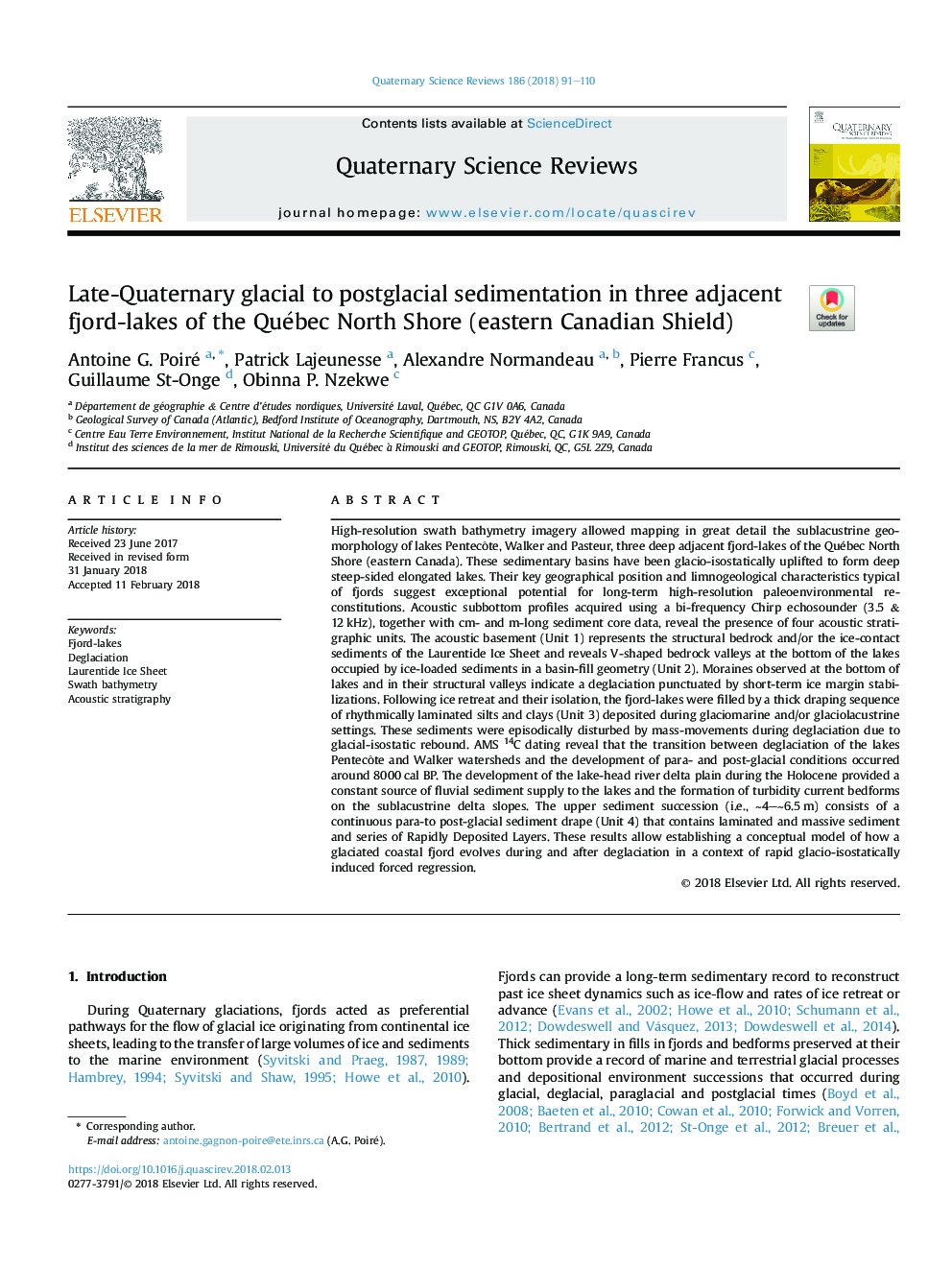| کد مقاله | کد نشریه | سال انتشار | مقاله انگلیسی | نسخه تمام متن |
|---|---|---|---|---|
| 8914883 | 1640749 | 2018 | 20 صفحه PDF | دانلود رایگان |
عنوان انگلیسی مقاله ISI
Late-Quaternary glacial to postglacial sedimentation in three adjacent fjord-lakes of the Québec North Shore (eastern Canadian Shield)
ترجمه فارسی عنوان
یخبندان اواخر قوچان به رسوب گذاری پس از گلشیا در سه دریاچه فجد مجاور دریای شمالی (ساحل کانادا)
دانلود مقاله + سفارش ترجمه
دانلود مقاله ISI انگلیسی
رایگان برای ایرانیان
کلمات کلیدی
موضوعات مرتبط
مهندسی و علوم پایه
علوم زمین و سیارات
زمین شناسی
چکیده انگلیسی
High-resolution swath bathymetry imagery allowed mapping in great detail the sublacustrine geomorphology of lakes Pentecôte, Walker and Pasteur, three deep adjacent fjord-lakes of the Québec North Shore (eastern Canada). These sedimentary basins have been glacio-isostatically uplifted to form deep steep-sided elongated lakes. Their key geographical position and limnogeological characteristics typical of fjords suggest exceptional potential for long-term high-resolution paleoenvironmental reconstitutions. Acoustic subbottom profiles acquired using a bi-frequency Chirp echosounder (3.5 & 12â¯kHz), together with cm- and m-long sediment core data, reveal the presence of four acoustic stratigraphic units. The acoustic basement (Unit 1) represents the structural bedrock and/or the ice-contact sediments of the Laurentide Ice Sheet and reveals V-shaped bedrock valleys at the bottom of the lakes occupied by ice-loaded sediments in a basin-fill geometry (Unit 2). Moraines observed at the bottom of lakes and in their structural valleys indicate a deglaciation punctuated by short-term ice margin stabilizations. Following ice retreat and their isolation, the fjord-lakes were filled by a thick draping sequence of rhythmically laminated silts and clays (Unit 3) deposited during glaciomarine and/or glaciolacustrine settings. These sediments were episodically disturbed by mass-movements during deglaciation due to glacial-isostatic rebound. AMS 14C dating reveal that the transition between deglaciation of the lakes Pentecôte and Walker watersheds and the development of para- and post-glacial conditions occurred around 8000â¯cal BP. The development of the lake-head river delta plain during the Holocene provided a constant source of fluvial sediment supply to the lakes and the formation of turbidity current bedforms on the sublacustrine delta slopes. The upper sediment succession (i.e., â¼4-â¼6.5â¯m) consists of a continuous para-to post-glacial sediment drape (Unit 4) that contains laminated and massive sediment and series of Rapidly Deposited Layers. These results allow establishing a conceptual model of how a glaciated coastal fjord evolves during and after deglaciation in a context of rapid glacio-isostatically induced forced regression.
ناشر
Database: Elsevier - ScienceDirect (ساینس دایرکت)
Journal: Quaternary Science Reviews - Volume 186, 15 April 2018, Pages 91-110
Journal: Quaternary Science Reviews - Volume 186, 15 April 2018, Pages 91-110
نویسندگان
Antoine G. Poiré, Patrick Lajeunesse, Alexandre Normandeau, Pierre Francus, Guillaume St-Onge, Obinna P. Nzekwe,
